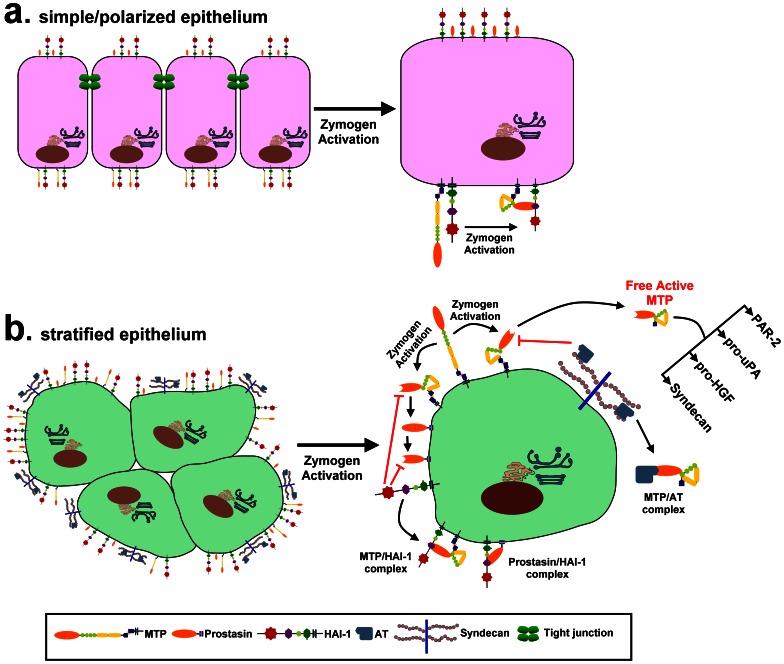Figure 6. A schematic model of the different functional and regulatory mechanisms for matriptase control and activity that relate to the histological differences between simple/polarized and stratified epithelium.
The subcellular distribution of matriptase (MTP), prostasin, and HAI-1 and the events following matriptase activation in the simple/polarized and the stratified epithelium are presented schematically. In simple/polarized epithelium, matriptase is targeted to the basolateral surface and prostasin is targeted to the apical surface with HAI-1 targeted to the both cell surface subdomains. The polarized expression of matriptase and prostasin is, however, likely not present in stratified epithelium, and as a result, matriptase gains an access to prostasin. When high level matriptase activation is induced, active matriptase is rapidly inhibited by nearby HAI-1 and the short-lived active matriptase can act on prostasin only in keratinocytes and not in polarized epithelial cells, due to the differential subcellular distributions of matriptase and prostasin between the two epithelia. Active prostasin is also rapidly inhibited by HAI-1 by forming a complex. A proportion of the active matriptase is shed from cell surface, an event that is evident in the stratified epithelial cells, and not in polarized epithelial cells. The shedding of active matriptase, the inhibition of active matriptase by AT bound to the cell via surface heparan sulfate proteoglycans, such as syndecans, is more obvious and important in stratified epithelial cells than in polarized epithelial cells. The active matriptase that escapes inactivation by HAI-1 or AT, can then act on its substrates, such as PAR-2, pro-uPA, pro-HGF, and syndecans.

